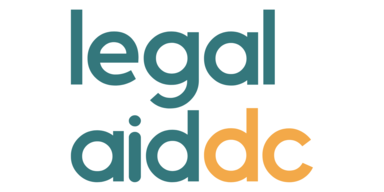
Earlier today, my colleague, Beth Mellen, highlighted that the Council will vote tomorrow on a bill that would substantially weaken the District’s COVID-19 pandemic eviction moratorium – even as the District struggles to process thousands of requests for rent relief. The bill also includes language that would weaken existing protections against utility shut-offs during the pandemic, allowing households to have services cut off unless they enter into payment plans, apply to STAYDC for assistance, or participate in one of a few listed safety net programs. Throughout the pandemic, the utility shut-off moratorium and the eviction moratorium have worked together to protect Washingtonians – eviction protections have kept them in their homes, while consistent access to electricity, water, gas, and telecommunications services have helped ensure health and safety. Weakening utility protections puts safe housing for Washingtonians at risk, even as the pandemic continues.
While the bill includes language protecting residents who are enrolled in safety net programs, it is under-inclusive and under-protective in a number of key ways:
- At the heart of the bill’s changes is the assumption that if someone is not getting public benefits, they must be able to get (and afford to pay toward) a payment plan. This assumption is problematic, both because it is unclear what payment plan terms utility companies will offer, and because for many low-income workers, there is still significant uncertainty regarding their future employment and income. While we hope that the District will be entering an economic transition period soon, the nature and pace of that transition is still unclear, and that makes planning for and entering into payment plans challenging.
- By tying continuing protection to safety net program participation, the bill ignores that some of the most vulnerable District residents are people who should be receiving assistance but aren’t, because many safety net programs remain challenging to access, particularly for Washingtonians with limited access to technology or language access barriers. The bill’s standard for qualifying for shut-off protection via safety net programs is also confusing – one can qualify by applying to STAYDC (a program whose promise is undercut by the fact that, as of Friday, it had not processed any of the 10,000 applications it had received). But for other safety net programs, one must be a current participant (an earlier version of the bill allowed workers who received Unemployment benefits since March 11, 2020 to qualify – that eligibility option now appears to be gone). These barriers to accessing safety net programs and inconsistent eligibility criteria for protection make it highly likely that the bill’s proposed roll-back of utility protections will leave many low-income Washingtonians unprotected.
- Even for those who are safety net program participants, the proposal creates unnecessary and substantial barriers for low-income people by placing the burden on them to provide evidence of their participation – even though the District already has records of this in its systems. Much of the success of the District’s moratorium policies has stemmed from the fact that they have not required Washingtonians to jump through administrative hoops to receive protection. In an effort to narrow the moratorium’s scope, the bill creates a new set of administrative barriers for low-income households to navigate.
- The bill does not adequately address the challenges of homeowners – many of whom may be struggling with low incomes and behind on utility payments. Unless a homeowner is already receiving certain qualifying benefits (such as LIHEAP, SNAP, or TANF), a homeowner who cannot afford a payment plan would have to apply for STAY DC to avoid disconnection. But homeowners are categorically ineligible for relief from STAY DC. There is a federal source of utility assistance for homeowners on the horizon through the Homeowner Assistance Fund (HAF), but that program has not even begun to be rolled out in DC, as we are still awaiting further guidance from the Treasury Department. The District should not allow disconnection of services for people who might qualify for utility funds through a federal program when the federal program has not even opened yet.
These problems with the bill highlight why the Council should not rush through a set of substantial changes to its utility shut-off moratorium. Instead, the Council should simply extend the Public Health Emergency (and current protections) and use the May 21 hearing of the Special Committee on COVID-19 Pandemic Recovery to begin gathering feedback on how to strengthen safety net programs. It should then pursue a more deliberate, thoughtful process – informed by the community – about how to transition out of emergency protections after the Public Health Emergency has ended.




